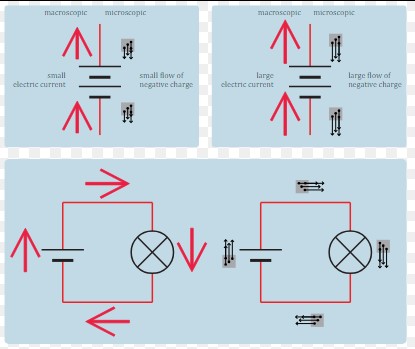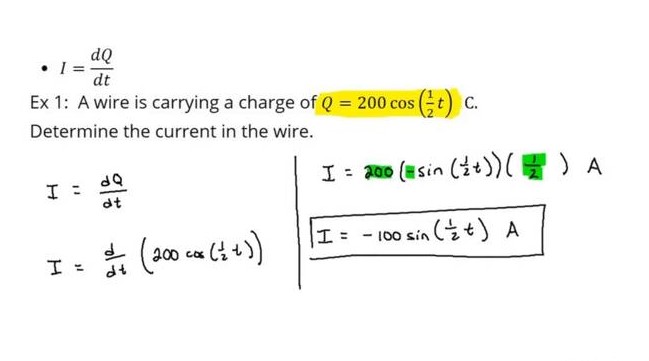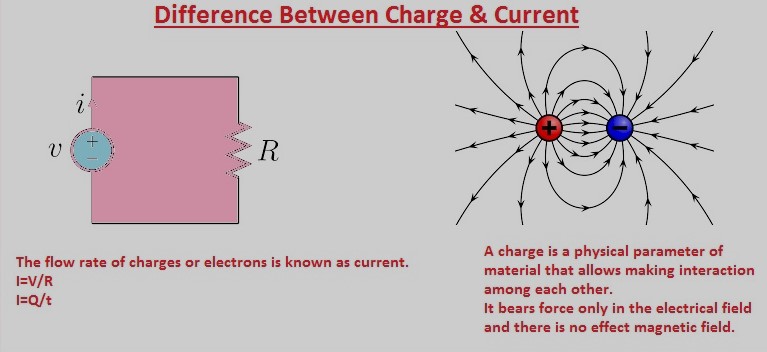In this blog post, we will explore the relationship between electric current and electric charge. We will discuss how electric current is related to electric charge, and the ways in which electric current and electric charge interact with one another.
Finally, we will examine the implications of this relationship for practical applications in engineering and other fields.
How current is related to charge

The relationship between current and charge is well established in physics and electrical engineering. In the simplest terms, current is the rate of flow of electrons, while charge is the amount of electrons that have flowed.
To put it another way, current is the amount of charge that moves past a given point in a certain amount of time, while charge is the amount of electrons that have been moved. This relationship is often represented mathematically as Amperes (the unit of measure for current) times seconds (the unit of measure for time) equals Coulombs (the unit of measure for charge). This relationship highlights the importance of current in the movement of charge through a circuit.
The mathematical equation that defines current and charge

The relationship between current and charge is beautifully captured by the mathematical equation known as the ‘Charge-Current Relationship’. This equation states that the amount of charge, Q, passing through a surface over a given period of time, t, is equal to the product of the current, I, and the time, t.
In other words, Q = I × t. This relationship is a fundamental law of physics and is a cornerstone of our understanding of electricity and electrical circuits. The Charge-Current Relationship is a powerful tool for understanding how electrical systems work and how we can control the flow of current and charge.
The practical applications of current and charge

Current and charge have a very close relationship, as current is the rate of flow of charge. In a circuit, electric current is the movement of electrons and is measured in amperes. Charge is the amount of electrons present in a circuit and is measured in coulombs.
Charge is the amount of electrons present in a circuit and is measured in coulombs. In order for current to flow, there must be an imbalance in electric charge. This imbalance is what causes the electrons to move and creates an electric current.
Knowing the relationship between current and charge is important since it can help us better understand the practical applications of electricity. For example, electric motors rely on the current and charge imbalance to create a rotating magnetic field that can be used to power machines. Without understanding the relationship between current and charge, it would be impossible to design and operate these motors.
Without understanding the relationship between current and charge, it would be impossible to design and operate these motors.
The safety considerations when working with current and charge
Working with current and charge, the relation between the two is an important factor to consider when it comes to safety. Current, or the flow of electrons, affects the amount of charge in a circuit.
To ensure safe operation, the current must be controlled to reduce the amount of charge and the related risks. This means that when dealing with current and charge, an understanding of the relation between the two is essential to ensure safety.
How can current and charge be used to create energy
The relationship between current and charge is an integral part of creating energy. Current is the flow of electrons through a conductor, such as a wire, while charge is the total amount of electrons contained in an object.
By combining these two concepts, it is possible to create and store energy. When electrons flow through a circuit, they create a potential difference that can be used to power devices. Additionally, if the current and charge is stored in a capacitor, then the stored energy can be released in a controlled way.
This makes current and charge an essential part of creating and storing energy.
Bottom Line
In conclusion, it is clear that there is a direct relationship between current and charge. Current is the rate of the flow of charge, and charge is a measure of the total number of electrons that have moved through a circuit.
Conversely, the more current that is present, the greater the charge. As such, current and charge are inextricably linked and play an integral role in the proper functioning of electrical circuits.

